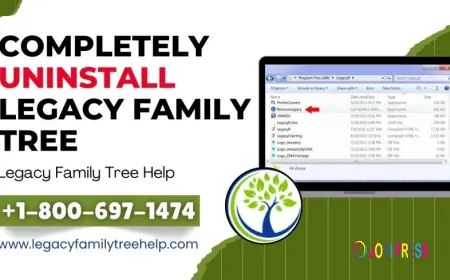India Motor Insurance Market 2030F Insights & Key Drivers
The Indian government’s enforcement of the Motor Vehicles Act, which mandates third-party insurance for all vehicles, has been a critical growth driver.

Introduction
The India Motor Insurance Market is undergoing a significant transformation, driven by rapid urbanization, evolving consumer expectations, technological innovations, and a strict regulatory environment. According to industry estimates, the market was valued at USD 12.89 billion in 2024 and is projected to reach USD 25.18 billion by 2030, expanding at a CAGR of 11.8% during the forecast period.
Motor insurance in India is not just a regulatory requirement but also a critical financial safeguard for millions of vehicle owners. The Motor Vehicles Act mandates that every vehicle owner must have at least third-party liability insurance, ensuring legal compliance and protection against unforeseen risks. With the country witnessing a surge in vehicle ownership, rising disposable incomes, and government-backed infrastructure initiatives, the demand for motor insurance is set to accelerate.
At the same time, the market faces persistent challenges, such as fraudulent claims, high loss ratios, and low penetration in rural areas. However, the increasing digitalization of insurance processes, innovative distribution channels, and customized insurance products are opening new doors of opportunity.
This article provides a comprehensive analysis of the India Motor Insurance Market, covering its emerging trends, growth drivers, industry highlights, competitive landscape, and future outlook.
Market Dynamics
Regulatory Framework as a Growth Driver
The Motor Vehicles Act provides the foundational growth for this sector, mandating that every vehicle on Indian roads must have at least third-party liability coverage. This regulation ensures a steady demand base for insurers. In addition, ongoing reforms by the Insurance Regulatory and Development Authority of India (IRDAI) focus on improving transparency, enhancing claim settlement processes, and promoting customer-centric policies.
Rising Vehicle Ownership
The steady increase in vehicle ownership, fueled by rising incomes, affordable vehicle financing, and urbanization, is expanding the pool of insurable assets. India’s automobile sector is one of the largest globally, with millions of new vehicles hitting the roads each year, directly fueling demand for insurance coverage.
Technological Advancements
Digital platforms, artificial intelligence (AI), machine learning (ML), and telematics are reshaping the motor insurance ecosystem. Telematics-based “pay-as-you-drive” or “usage-based” insurance policies are becoming increasingly popular, offering personalized premiums based on driving behavior.
Challenges in the Sector
While opportunities abound, challenges such as high claim ratios, increasing repair costs, and fraudulent claims (e.g., staged accidents, inflated repair bills) remain critical concerns. Moreover, rural India continues to show low penetration due to lack of awareness and limited accessibility to insurance services.
Download Free Sample Report: https://www.techsciresearch.com/sample-report.aspx?cid=27023
Emerging Trends in the India Motor Insurance Market
1. Rise of Usage-Based Insurance (UBI)
Consumers are increasingly adopting usage-based insurance models where premiums depend on driving behavior, mileage, and real-time monitoring. This shift allows safer drivers to enjoy lower premiums while promoting responsible driving habits.
2. Integration of Telematics and IoT
The adoption of Internet of Things (IoT) devices in vehicles enables real-time monitoring of driving data, accident detection, and theft tracking. Insurers are leveraging this data to reduce fraud and improve claim accuracy.
3. Digital-First Insurance Experience
With the surge in smartphone penetration, insurers are focusing on mobile-first platforms. Customers can now purchase policies, renew them, and even file claims through apps, ensuring convenience and speed.
4. AI-Powered Fraud Detection
Insurers are deploying AI-driven fraud detection systems to combat rising cases of fraudulent claims. Advanced data analytics helps identify unusual patterns and prevent financial losses.
5. Green Insurance Products
In line with global sustainability goals, insurers in India are introducing eco-friendly insurance initiatives such as paperless transactions and products designed for electric vehicles (EVs). With the government promoting EV adoption, this segment is expected to grow rapidly.
6. Shift Toward Comprehensive Coverage
Consumers are increasingly opting for comprehensive insurance policies over third-party liability, as they provide broader protection, including own damage, theft, and natural disaster coverage.
7. Expansion of Bancassurance and Online Distribution
The rise of online platforms and the integration of motor insurance with banking services (bancassurance) have revolutionized distribution channels, making insurance more accessible to wider demographics.
Market Segmentation Insights
By Insurance Type
- Own Damage Insurance: Covers damages to the insured vehicle due to accidents, theft, or natural disasters. Increasing demand for comprehensive protection is fueling this segment.
- Third-Party Liability Insurance: A mandatory requirement for all vehicle owners, ensuring consistent market growth.
By Application
- Commercial Motor Insurance: This is the fastest-growing segment, driven by the expansion of logistics, e-commerce deliveries, and infrastructure projects. Businesses rely heavily on insuring fleets for protection against accidents and liabilities.
- Private Motor Insurance: Remains the dominant segment, supported by rising household incomes and the increasing number of personal vehicles.
By Distribution Channel
- Online Platforms: The fastest-growing channel, providing customers with the ability to compare policies, receive instant quotes, and access seamless claim processing.
- Traditional Channels: Individual agents, brokers, and banks continue to play a key role, particularly in rural and semi-urban regions where personal interaction remains valued.
Industry Key Highlights
- The market is projected to grow from USD 12.89 billion in 2024 to USD 25.18 billion by 2030, at a CAGR of 11.8%.
- Commercial motor insurance is emerging as a key growth driver, fueled by logistics and transportation expansion.
- Online distribution channels are rapidly gaining popularity due to transparency, speed, and accessibility.
- Fraudulent claims and high claim ratios remain challenges that insurers must address through advanced technologies.
- Eco-friendly and digital-first initiatives are aligning the sector with sustainability and customer-centric innovation.
Competitive Landscape
The India Motor Insurance Market is highly competitive, with a mix of public sector and private players. Companies are focusing on innovation, customer experience, and digital adoption to strengthen their market positions.
Major Players Include:
- ICICI Lombard General Insurance
- Bajaj Allianz General Insurance
- Tata AIG General Insurance
- HDFC ERGO General Insurance
- The New India Assurance Co. Ltd.
- The Oriental Insurance Co. Ltd.
- Bharti AXA General Insurance
- Reliance General Insurance
- IFFCO Tokio General Insurance
- Royal Sundaram General Insurance Co. Ltd.
Competitive Strategies Observed:
- Expansion of digital platforms and AI-based services
- Introduction of EV-specific insurance products
- Tailored policies for logistics and e-commerce fleets
- Partnerships with automotive manufacturers and banks
- Focus on improving fraud detection and claim settlement efficiency
Future Outlook
The future of India’s motor insurance market appears promising, with double-digit growth potential. Several key factors will shape the industry over the next decade:
- EV Adoption: As India accelerates toward electric mobility, specialized EV insurance products will gain prominence.
- Rural Market Penetration: Expanding awareness and digital distribution will unlock untapped potential in rural regions.
- AI and Data-Driven Underwriting: Predictive analytics will enable more accurate pricing and risk assessment.
- Customized Products: Tailor-made solutions for specific demographics, such as gig economy drivers or SMEs with vehicle fleets.
- Sustainability Initiatives: Insurers adopting green policies and paperless operations will gain competitive advantages.
10 Benefits of the Research Report
- Provides accurate market size estimations and growth forecasts.
- Offers insights into key trends and innovations shaping the industry.
- Identifies growth drivers and challenges impacting market performance.
- Analyzes regional and segment-wise opportunities for investors.
- Highlights competitive strategies of leading insurers in India.
- Covers regulatory landscape and its implications for insurers.
- Assesses the impact of technological disruptions such as AI and telematics.
- Guides decision-makers with data-backed insights for strategic planning.
- Evaluates consumer behavior shifts, especially in digital adoption.
- Assists stakeholders in identifying emerging opportunities and risks.
Conclusion
The India Motor Insurance Market is on a robust growth trajectory, fueled by regulatory mandates, rising vehicle ownership, technological advancements, and the expansion of logistics and e-commerce. While challenges such as fraud and high claim ratios persist, the integration of AI, telematics, and digital-first solutions is revolutionizing the sector.
Looking ahead, the industry is poised to not only grow in size but also in sophistication, with a focus on personalization, sustainability, and inclusivity. Insurers that embrace innovation, strengthen fraud detection, and expand into underserved markets will be best positioned to thrive in this competitive landscape.
Contact Us-
Mr. Ken Mathews
708 Third Avenue,
Manhattan, NY,
New York – 10017
Tel: +1-646-360-1656
Email: [email protected]
Website: www.techsciresearch.com
What's Your Reaction?
 Like
0
Like
0
 Dislike
0
Dislike
0
 Love
0
Love
0
 Funny
0
Funny
0
 Angry
0
Angry
0
 Sad
0
Sad
0
 Wow
0
Wow
0


















































